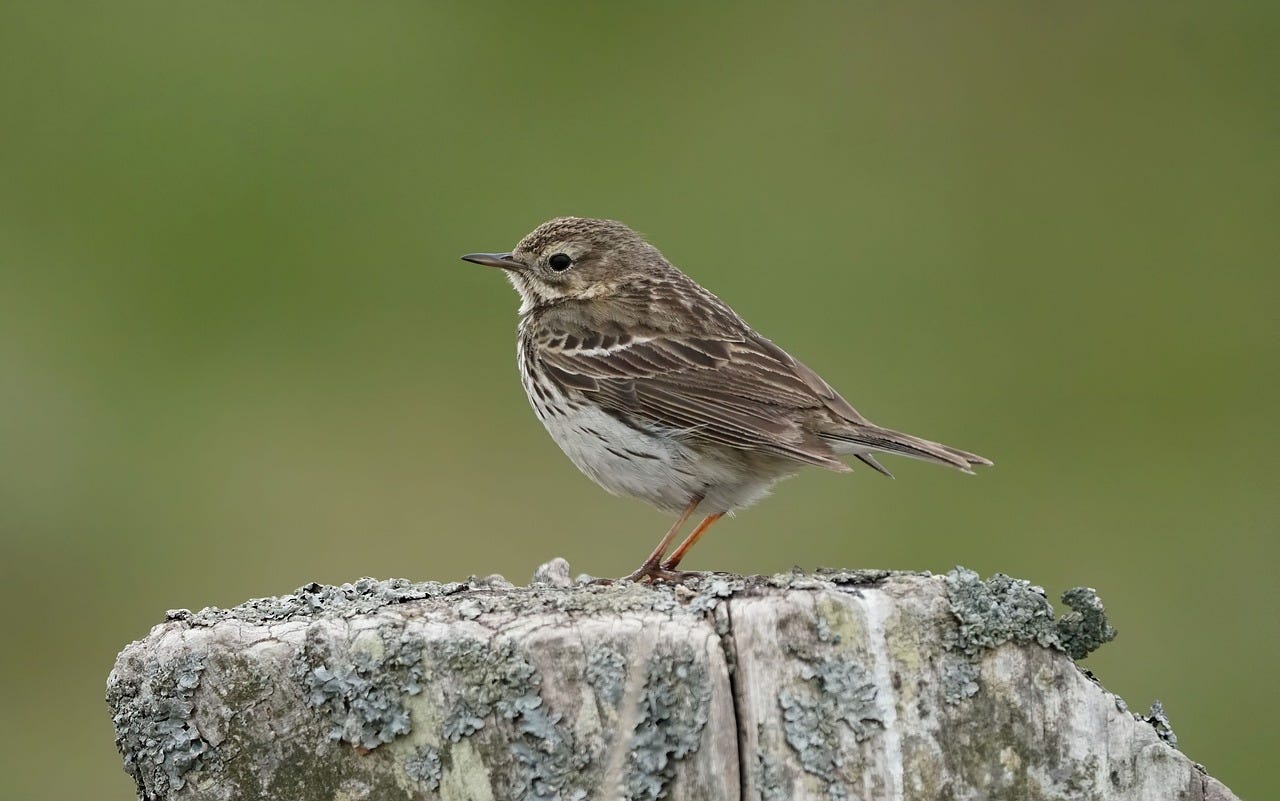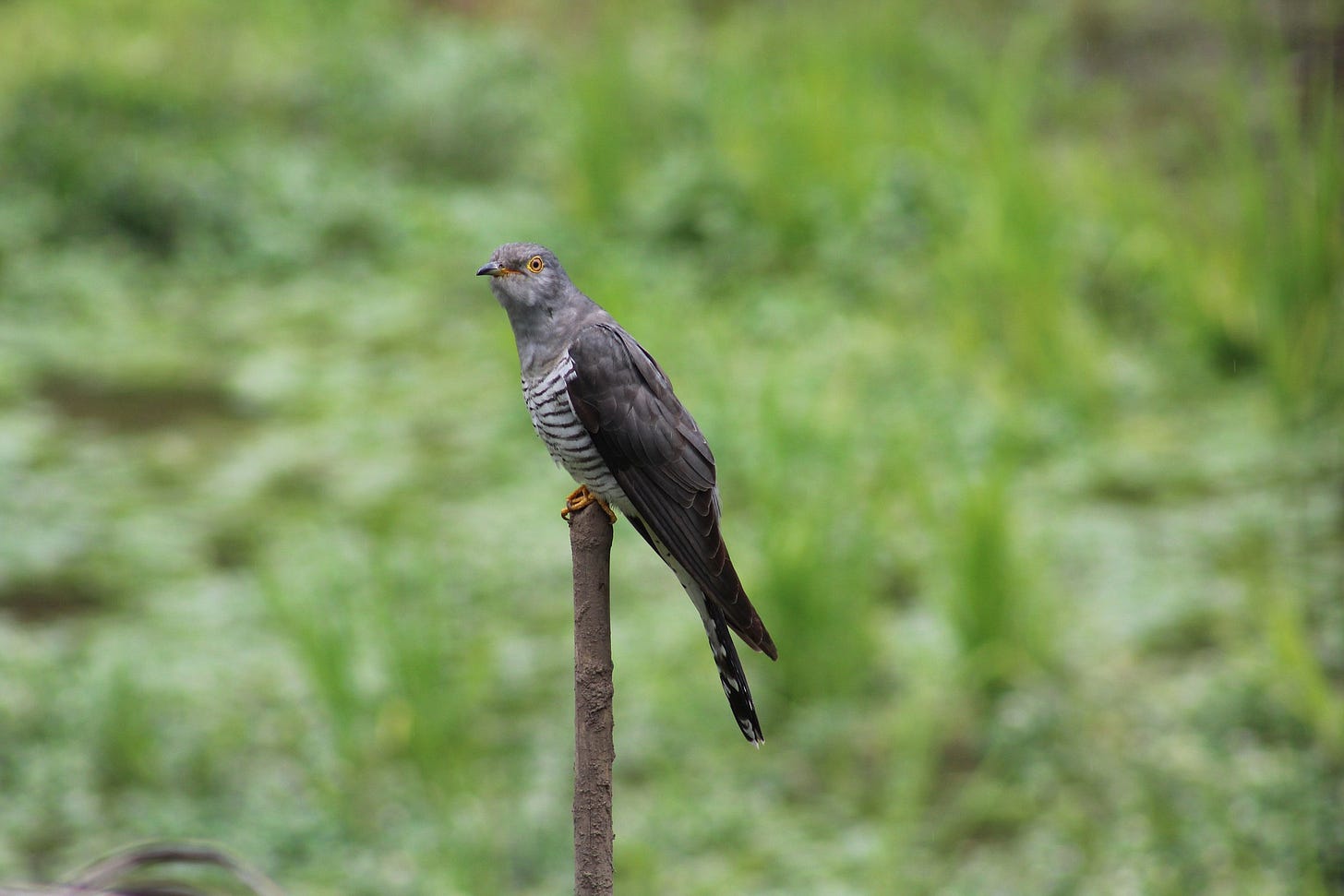The meadow pipit is one of the ultimate LBJs (‘little brown jobs’) of the bird world, but their voice plays a big part in the soundscapes of open country all over Britain.
Meadow pipits spend much of their lives quietly poking about in long grass, minding their own business, being thoroughly anonymous and small and streaky.
You typically only notice them when you’ve walked too close, and they lift off into the air making shrill noises.
(Listen to the sound from 10 seconds in - this is the typical seep-seep-seep flight call)
Some birds make flying look easy. Not the meadow pipit.
The meadow pipit makes air travel look unpleasant. Their performance has been described as like a scrap of paper blowing in the wind.
Once disturbed, they tend to fly up, seep-seep-seep-ing, before veering back around you, or over your head, and then dropping down again, not too far away. If you’re in luck, that might be on top of a stone wall or a shrub, but often as not they will have dived back to the ground, invisible again.
With a decent view, you can see that they have an olive-brown streaky back, paler below with streaking to the front and sides, and pinkish-orange legs. When walking their gait is rather jerky, like a wagtail’s.
The expression ‘it’s just a meadow pipit’ (or ‘just a mipit’, as they’re often called), is something that birders say a lot.
There are all kinds of rare things that look rather like a meadow pipit. And there are a lot of actual meadow pipits too.
On some upland walks they are the commonest bird, perhaps even the only bird, you will find, for miles. They may look fragile, but they know how to eke out a living in seemingly unpromising places.
What’s more, in spring they reveal a more extrovert behaviour, that is anything but dull. Meadow pipits are parachutists. And it’s their song that often gives it away.
Like the skylark, meadow pipits sing as they fly. The first part of their song is a series of little peeps, that they give as they climb steeply into the air from wherever they were perched.
Once at the right height, they begin to circle slowly back down to the ground, wings held like a sail above them. As they descend, the notes of their simple song descend too.
On approaching the ground, or once they’ve come to rest on a low scrap of vegetation, the song accelerates, lowers in volume and peters out.
Several birds will often be holding adjacent territories; as one bird finishes another goes up nearby. It’s like avian popcorn.
Away from the uplands, you can experience this performance on the less intensively farmed grasslands, such as downland and commons. Meadow pipits nest on the ground, and need plenty of rough tussocks to hide away their nests - a favourite target for cuckoos looking to smuggle in their own eggs during April and May.
Once the season of cuckoos and extravagant display flights is over, you can still expect to hear that seep seep seep call in response to your presence, in almost any open landscape. Once you know it, you can put a name to many more of those hitherto mystery birds.
Perplexedly parenting…. Cuckoo
Join me for ten weeks of birdsong
If you want more help to hone your bird listening skills, join a friendly group of us for the ten-week Birdsong Essentials course, beginning again next week.
You’ll learn. You’ll laugh. You’ll see more Barn Owls👇
I am absolutely loving the course so far, thank you for putting it together. I had a wonderful moment last week when out walking, where I suddenly heard a Blackbird alarming, so turned around - and there was a Barn Owl! Just a few weeks ago, I would not have recognised the alarm call and never would have turned around and seen the owl.
- Chloe Harrison, current course student
There’s a discount for two people sharing materials, and a lower-cost (£60) option if the standard fee is a barrier. Not sure if it’s right for you? Drop me a line with any questions.
Enjoy the birds.
~ Charlie





